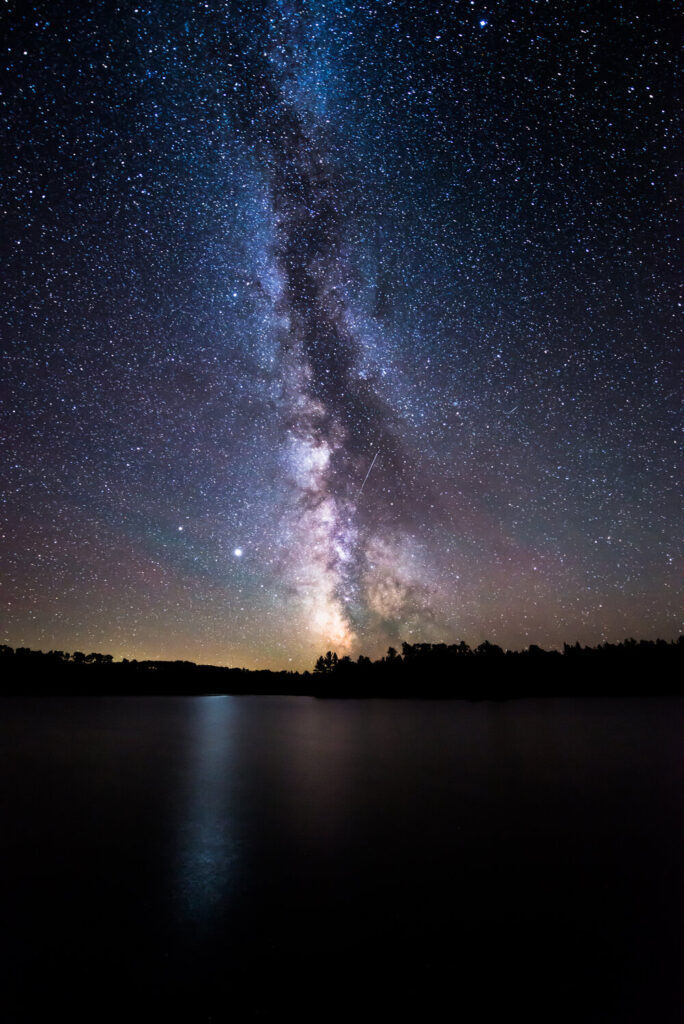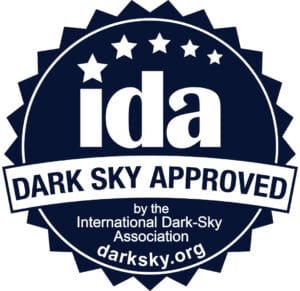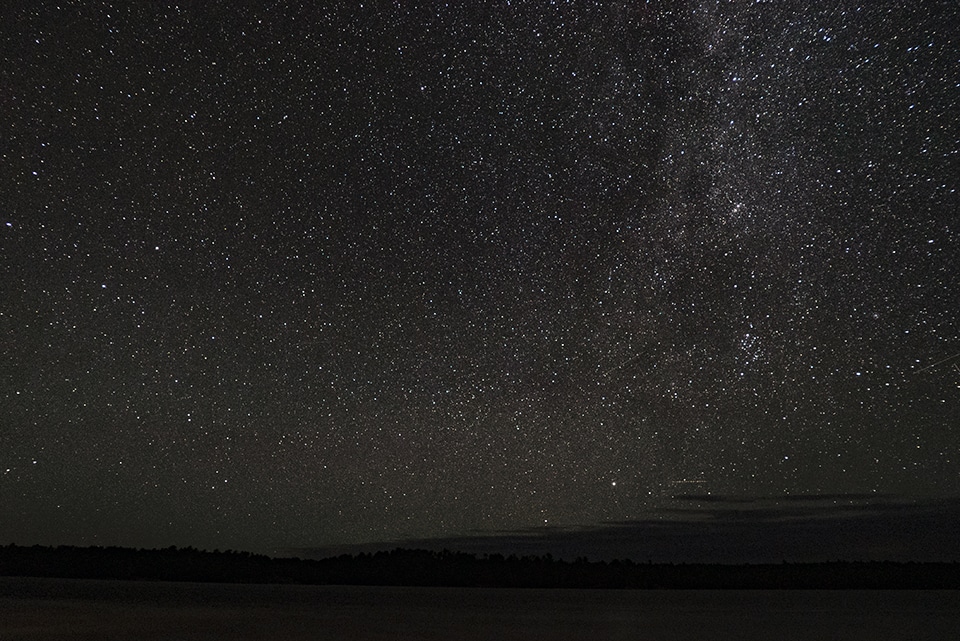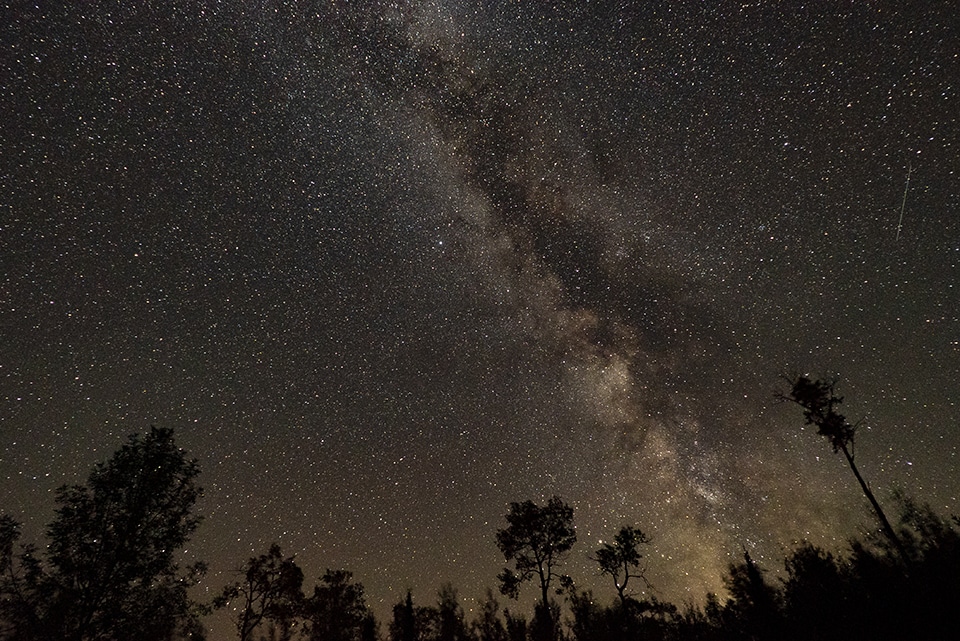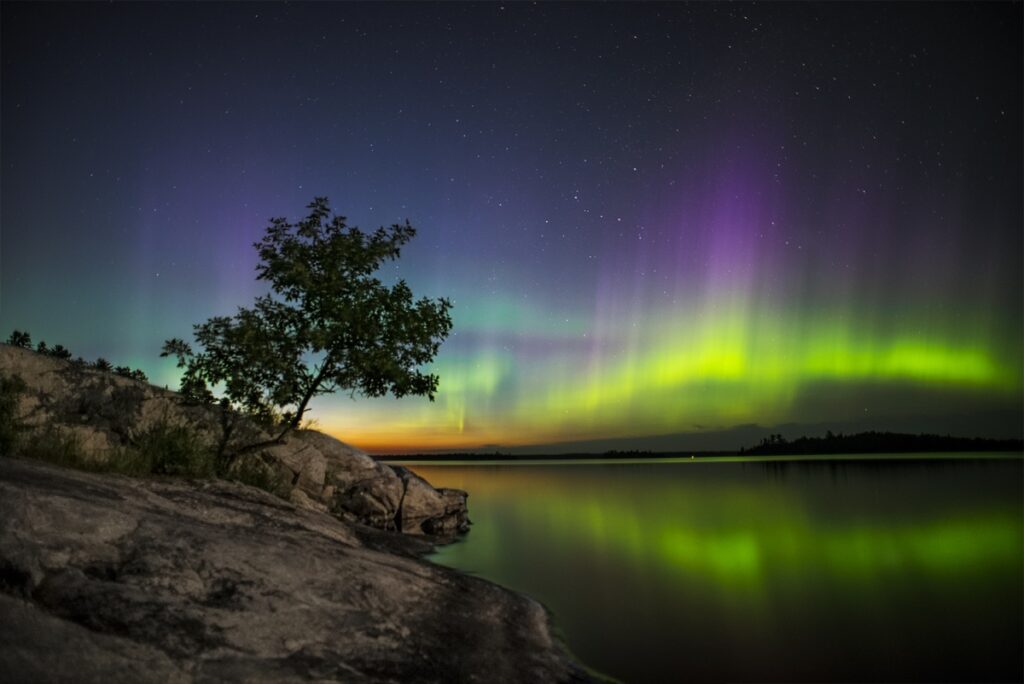
The starry skies of Voyageurs National Park in northern Minnesota have been officially certified as an International Dark Sky Sanctuary, and one of the best places in the world to experience the night sky.
Voyageurs joins the Boundary Waters Canoe Area Wilderness, which in September received the rare designation by the International Dark Sky Association. The move is part of an international effort towards Dark Sky certifications for Quetico and LaVerendrye Provincial Parks in Ontario.
Ultimately, land managers in the area hope for a Dark Sky region, which would be a unique certification. It is being coordinated in the regional, cross-border Heart of the Continent Partnership. The idea was first discussed in 2009 during the joint celebration for the hundredth anniversary of Quetico and the Superior National Forest.
Quetico Provincial Park’s application is currently being considered by the International Dark Sky Association, light fixture replacement and other improvements are underway, and they hope to hear the results in the next few months. LaVerendrye’s designation is at least a year away.
Receiving the designation required significant work by Voyageurs National Park staff and supporters. Voyageurs National Park employees first worked with a special National Park Service division to assess the current state of the night sky. Analysis using special cameras and other technology confirmed that the park’s skies are barely affected by artificial light.
“Voyageurs National Park has some of the darkest skies in the Midwest. We invite visitors to experience our spectacular night sky resource for themselves, winter or summer.”
– Bob DeGross, superintendent of Voyageurs National Park
The park next developed a plan to replace existing lighting in the park with Dark Sky-compliant fixtures. Park staff have already begun replacing lighting at the park with “night sky friendly” lights, supplied in large part by Voyageurs Conservancy (previously called Voyageurs National Park Association).
The International Dark Sky Association also certifies lighting fixtures, based on several criteria:
- Only be on when needed
- Only light the area that needs it
- Be no brighter than necessary
- Minimize blue light emissions
- Be fully shielded (pointing downward)
The park hopes to have 100 percent night-friendly lighting within 10 years. The park and Voyageurs Conservancy plan to conduct annual measurements of sky darkness, and provide education and encouragement for others to reduce light pollution.
“We are very proud of Voyageurs National Park’s achievement in becoming an International Dark Sky Park. Their commitment to protecting their naturally dark skies is commendable.”
– Ruskin Hartley, IDA Executive Director
Very few places on Earth still have such naturally dark skies. Ninety-nine percent of people in American and Europe live in areas affected by light pollution.
The Dark Sky designation does not have any regulatory authority. It is based on the quality of the existing night sky, efforts to protect it by the park, and a commitment to educating and working with gateway communities to preserve the resource.
At its northern latitudes, Voyageurs has become a renowned place to view the aurora borealis, with people traveling from around the world in hopes of seeing the spectacular sight. With the large lakes of the National Park, visitors often get a big view of a sky that is almost pristine in terms of light pollution.
Voyageurs recommends visiting in winter to see the northern lights, because the longer nights offer more opportunities to see them. But summer is the best time to see the Milky Way galaxy, because the Earth is tilted toward it during that season.
“Night sky protection enhances qualities of solitude and undeveloped wilderness character that animals depend on for survival, park visitors seek for connections, and many cultural-historical parks require for preservation. In this regard, the NPS recognizes a naturally dark night sky as more than a scenic canvas; it is part of a complex ecosystem that supports both natural and cultural resources.”
– National Park Service, Natural Sounds and Night Skies Division

More information:
- Voyageurs National Park Certified as International Dark Sky Park – National Park Service
- Heart of the Continent Partnership
- Preserving Voyageurs National Park’s Starry Skies – Voyageurs National Park
- International Dark Skies Association
- Video: Becoming a Dark Sky Region: A Conversation with Partnerships Up North – Bell Museum


